The popular automatic pool cleaner by Zodiac Pool Systems is the Polaris 380. It’s designed to clean pools efficiently and thoroughly. The hose for the Polaris 380 is an essential component that connects the cleaner to the pool’s filtration system. It’s typically made of durable materials like plastic or rubber to withstand the rigors of pool cleaning.
Polaris 380 vs. Polaris 280: Choosing the Right Pool Cleaner for Your Needs
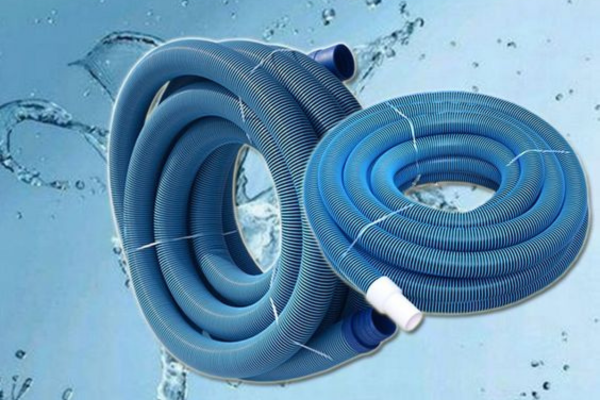
Comparing Polaris 380 and 280 Specifications
Drive Mechanism:
The Polaris 380: Triple Jet System provides enhanced propulsion and faster cleaning.
Polaris 280: Dual Jet System offers efficient cleaning but with slightly less power.
Debris Handling:
Polaris 380: Larger throat and debris bag capacity, suitable for handling larger debris.
Polaris 280: Smaller debris intake, effective for standard debris types found in residential pools.
Booster Pump Requirement:
Both models require a dedicated booster pump for optimal operation.
Cleaning Speed:
Poliris 380: Cleans a standard pool in approximately 2.5 hours.
Poliris 280: Cleans a standard pool in approximately 3 hours.
Hose Length:
Both models come with a standard 31-foot feed hose, suitable for most residential pools.
Benefits of Upgrading to Polaris 380
Enhanced Cleaning Power:
The triple jet system in the Polaris 380 offers superior cleaning power, reducing the time needed to clean the pool and improving overall efficiency.
Increased Debris Capacity:
With a larger debris bag and intake, the Polaris 380 can handle larger debris, reducing the frequency of emptying the bag and improving convenience.
Improved Maneuverability:
The advanced drive mechanism provides better maneuverability around obstacles and improved coverage of the pool floor and walls.
Polaris 380’s Unique Features and Performance Enhancements
All-Wheel Belt Drive System:
Provides consistent and reliable movement, ensuring thorough cleaning of all pool areas.
Large-Capacity Filter Bag:
Captures more debris in one cycle, reducing maintenance frequency and ensuring cleaner water.
Advanced Vacuum Power:
The enhanced vacuum system ensures more effective removal of dirt and debris, leaving the pool spotless.
Durable Construction:
Built with high-quality materials to withstand harsh pool environments and prolonged use,
The Polaris 380 offers significant upgrades over the Polaris 280, including enhanced cleaning power, larger debris capacity, and improved maneuverability. These features make the Polaris 380 an excellent choice for pool owners seeking a more powerful and efficient cleaning solution.
Understanding the Importance of the G5 Feed Hose in Polaris Pool Cleaners

What Makes the G5 Feed Hose Different?
Material Quality:
Constructed from durable, high-quality materials that resist wear, tear, and chemical damage, ensuring longevity.
Design:
Features a reinforced structure that maintains flexibility while preventing kinks and tangles during operation.
Compatibility:
Specifically engineered for compatibility with various Polaris pool cleaner models, ensuring optimal performance and reliability.
How the G5 Feed Hose Improves Pool Cleaning Efficiency
Enhanced Flexibility:
The G5 feed hose’s flexibility allows it to navigate around obstacles seamlessly, ensuring comprehensive pool coverage.
Swivel Mechanisms:
Equipped with advanced swivels to prevent hose tangling and maintain smooth operation, reducing downtime and maintenance needs.
Optimal water flow:
It is designed to maintain consistent water flow, which enhances the cleaning power and efficiency of the connected pool cleaner.
Improved Durability:
The robust construction of the G5 feed hose reduces the likelihood of damage, leading to fewer replacements and better long-term performance.
Maintenance Tips for G5 Feed Hose
Regular Inspection:
Routinely check the hose for signs of wear, cracks, or leaks. Replace any damaged sections promptly to avoid performance issues.
Cleaning:
Clean the hose periodically to remove debris and buildup that could obstruct water flow. Use mild detergents and rinse thoroughly.
Proper Storage:
When not in use, store the hose in a cool, dry place, coiling it loosely to prevent kinks and maintain its shape.
Swivel Maintenance:
Lubricate the swivels periodically to ensure smooth operation and prevent tangling. Replace faulty swivels to maintain hose efficiency.
The G5 feed hose is essential for maintaining optimal performance in Polaris pool cleaners due to its superior material quality, design features, and compatibility. Proper maintenance of the G5 feed hose ensures prolonged efficiency and effectiveness in pool cleaning operations.
Installation Guide for Polaris 380 Complete Feed Hose with UWF
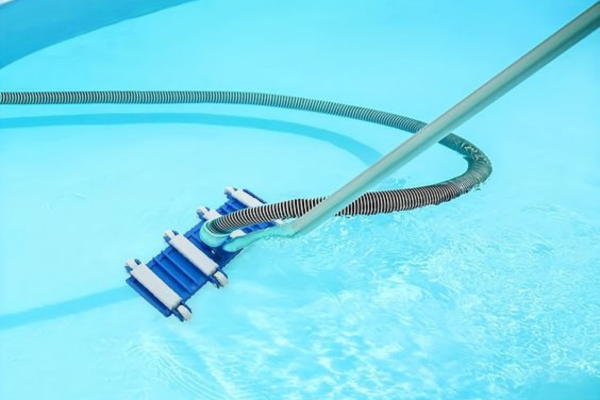
Step-by-Step Installation Process
Preparation:
Ensure all components are present, including the feed hose, swivels, and Universal Wall Fitting (UWF).
Lay out the hose to prevent tangles during installation.
Attach the UWF:
Install the Universal Wall Fitting into the pool’s return line.
Ensure it is securely tightened to prevent leaks.
Connect the feed hose to the UWF.
Attach the first section of the feed hose to the UWF.
Use the provided clamp to secure the connection tightly.
Install Swivels and Floats:
Connect the swivels at the appropriate intervals along the feed hose.
Ensure the floats are evenly spaced to maintain proper hose buoyancy.
Attach the Feed Hose to the Polaris 380:
Secure the other end of the feed hose to the Polaris 380 pool cleaner.
Confirm all connections are tight and secure to prevent water leakage.
Test the setup.
Turn on the pool pump and observe the cleaner’s movement.
Ensure the hose moves freely and does not tangle.
Troubleshooting Common Installation Issues
Leakage at Connections:
Tighten all fittings and clamps to ensure a watertight seal.
Check for damaged O-rings or seals and replace them if necessary.
Hose Tangling:
Ensure swivels are functioning correctly and not obstructed.
Verify that the hose length is appropriate for your pool size.
Poor Cleaner Performance:
Check for kinks or blockages in the hose.
Ensure the pool pump is operating at the recommended pressure.
Adjusting the Hose Length for Optimal Performance
Measure pool dimensions:
Measure the distance from the UWF to the farthest point in the pool.
Add extra length to account for movement and coverage.
Cutting the hose:
If the hose is too long, use scissors to cut it to the appropriate length.
Ensure the cut is straight to maintain a secure connection.
Connecting Additional Sections:
If the hose is too short, connect additional sections using swivels.
Secure each connection with clamps to prevent leaks.
Final Adjustment:
Re-test the setup by running the pool cleaner.
Make any necessary adjustments to ensure the hose allows the cleaner to reach all areas of the pool without tangling.
Proper installation and adjustment of the Polaris 380 complete feed hose with UWF ensure efficient pool cleaning and prevent common operational issues. Regular maintenance and inspection will help sustain optimal performance.
Maximizing the Performance of Your Polaris Vac-Sweep 380 Pool Cleaner
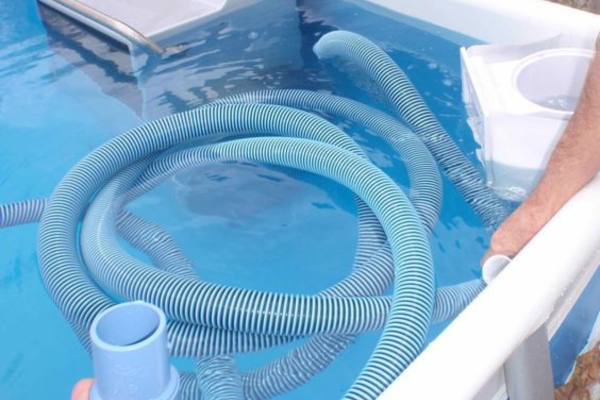
Regular Maintenance Checklist for Polaris 380
Inspect and clean the filter bag.
Empty and clean the filter bag after each use to ensure maximum debris collection efficiency.
Check for tears or damage, and replace the bag if necessary.
Examine the hose and swivels:
Regularly inspect the feed hose for cracks, leaks, or kinks.
Ensure the swivels are functioning properly to prevent tangling.
Check the wheels and bearings.
Inspect the wheels for wear and tear. Replace it if the tread is worn down.
Lubricate bearings periodically to maintain smooth operation.
Assess the Tail Sweep and Scrubber:
Ensure the tail sweep and scrubber are intact and not excessively worn.
Replace as needed to maintain effective pool cleaning.
Verify water pressure:
Check that the pool pump is operating at the correct pressure for optimal cleaning performance.
Clean the in-line filter screen to ensure unobstructed water flow.
Replacing Wear and Tear Parts: When and How
Filter Bag:
Replace the filter bag when it shows signs of wear, such as holes or frayed edges.
Remove the old bag and attach the new one by securing it to the bag collar.
Feed Hose:
Replace the feed hose if it develops cracks, leaks, or permanent kinks.
Disconnect the old hose from the cleaner and UWF, then attach the new hose, ensuring all connections are tight.
Wheels and bearings:
Replace wheels when the tread is worn to ensure proper traction and movement.
Remove the axle screws, slide off the old wheels, and install the new wheels. Lubricate bearings as needed.
Tail Sweep and Scrubber:
Replace the tail sweep and scrubber if they become worn or damaged.
Detach the old parts and secure the new ones in place, ensuring proper fit and function.
Optimizing Polaris 380 Settings for Different Pool Types
Adjusting the thrust jet:
For pools with varying shapes or slopes, adjust the thrust jet to control the cleaner’s direction and coverage.
Experiment with different angles to achieve optimal movement and cleaning efficiency.
Float Positioning:
Ensure the floats are evenly spaced along the feed hose to maintain balance and prevent tangling.
Adjust float positions based on pool depth and cleaner behavior.
Regulating Sweep Hose Pressure:
Adjust the sweep hose pressure to ensure effective sweeping action without excessive splashing.
Use the pressure relief valve to fine-tune the water flow to the sweep hose.
Timer Settings:
Set the pool cleaner’s timer to match the size and usage of your pool.
For heavily used pools, increase cleaning frequency to maintain cleanliness.
By following this maintenance checklist, replacing wear parts promptly, and optimizing settings for your specific pool type, you can maximize the performance and longevity of your Polaris Vac-Sweep 380 pool cleaner.
Identifying and Replacing Polaris 380 Feed Hose Replacement Parts
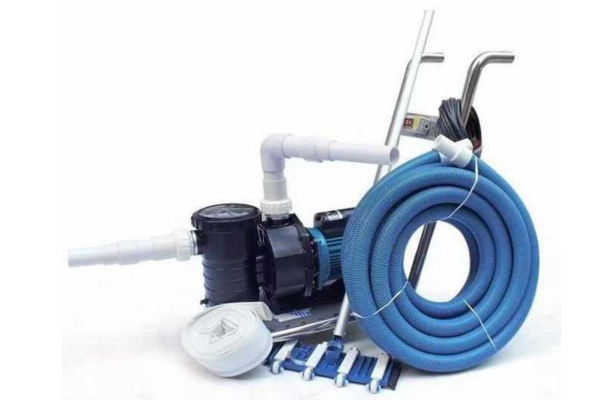
How to Identify Worn-Out Feed Hose Parts
Visual Inspection:
Cracks and Leaks: Examine the feed hose for visible cracks, splits, or leaks. These are clear indicators of wear.
Kinks and Bends: Look for any permanent kinks or bends that could obstruct water flow and hinder performance.
Performance Issues:
Reduced Mobility: If the cleaner’s movement is restricted or erratic, it may be due to worn or damaged hose components.
Water Pressure Loss: A noticeable drop in water pressure can indicate a compromised feed hose.
Swivel and Float Checks:
Swivel Integrity: Inspect swivels for smooth rotation. If they are stiff or do not rotate freely, replacement may be necessary.
Float Positioning: Ensure floats are not damaged or misplaced. Damaged floats can affect the hose’s buoyancy and balance.
Guide to Purchasing Genuine Polaris Feed Hose Parts
Authorized Dealers:
Purchase replacement parts from authorized Polaris dealers to ensure authenticity and quality.
Verify the department’s credentials and reputation before making a purchase.
Manufacturer’s Website:
Use the Polaris official website to find and order genuine replacement parts.
Utilize online part diagrams to identify the correct components.
Part Numbers:
Always refer to the part numbers listed in the Polaris 380 manual to ensure you are ordering the correct items.
Cross-check part numbers with the dealer or website to avoid purchasing incorrect parts.
DIY Replacement of Feed Hose Components
Preparation:
Gather necessary tools such as screwdrivers, pliers, and replacement parts.
Lay out all components and ensure you have a clear workspace.
Replacing the Feed Hose:
Detach the Old Hose: Disconnect the old feed hose from the cleaner and UWF. Use pliers if connections are tight.
Install the New Hose: Attach the new hose to the cleaner and UWF. Secure connections tightly with clamps.
Swivel Replacement:
Remove Old Swivels: Cut or unscrew old swivels from the feed hose sections.
Attach New Swivels: Insert new swivels into the hose, ensuring they are properly aligned and secure.
Float Adjustment:
Remove and Replace Floats: Slide old floats off the hose and replace them with new ones. Position them evenly for optimal performance.
Final Testing:
Check Connections: Ensure all connections are tight and secure.
Run the Cleaner: Test the cleaner in the pool to verify smooth operation and address any issues immediately.
Proper identification and replacement of worn-out feed hose parts are crucial for maintaining the performance of your Polaris 380 pool cleaner. By sourcing genuine parts and following a structured DIY replacement process, you can ensure long-lasting and efficient pool cleaning.
Common Issues and Solutions for Polaris Pressure-Side Pool Cleaners

Dealing with Low Pressure and Its Impact on Hose Performance
Inspect the booster pump.
Ensure the booster pump is functioning correctly and providing adequate pressure.
Check for any signs of wear or damage to the pump components and replace them if necessary.
Clean the filter screen.
Remove and clean the filter screen located at the quick disconnect to ensure unobstructed water flow.
Regularly cleaning the filter screen prevents debris buildup that can reduce pressure.
Check for leaks.
Inspect the feed hose and connections for any leaks that could reduce water pressure.
Tighten or replace any leaking fittings, and repair or replace damaged hose sections.
Inspect Valves and Orifices:
Ensure all valves and orifices in the water supply line are open and free from blockages.
Clean or replace any clogged or damaged components to restore proper pressure.
How to Fix Twisted or Tangled Feed Hoses
Straighten the hose.
Lay the hose out flat in the sun for a few hours to soften and straighten it.
Manually untwist any kinks or bends to restore the hose’s natural shape.
Adjust Floats and Swivels:
Ensure the floats are evenly spaced along the hose to maintain proper buoyancy and prevent tangling.
Check swivels for smooth operation and replace any that are not rotating freely.
Regular Maintenance:
Regularly inspect and straighten the hose to prevent kinks and tangles from forming.
Store the hose in a coil when not in use to maintain its shape and flexibility.
Solving Frequent Back-Up Valve Failures
Inspect the backup valve.
Check the backup valve for any signs of damage or wear.
Replace the valve if it is cracked, leaking, or not functioning correctly.
Clean the valve.
Disassemble and clean the backup valve to remove any debris or obstructions that may affect its performance.
Ensure all internal components are free from blockages and moving parts operate smoothly.
Check the timing mechanism:
Verify that the timing mechanism inside the back-up valve is working correctly.
Adjust or replace the timing mechanism if it is not activating at the proper intervals.
Ensure proper installation:
Confirm that the back-up valve is installed in the correct position along the feed hose.
Follow the manufacturer’s guidelines for positioning and securing the valve.
Addressing these common issues with Polaris pressure-side pool cleaners can significantly enhance their performance and longevity. Regular maintenance, proper installation, and timely replacement of worn components are key to ensuring efficient and reliable pool cleaning.

Meet David Thomas, a seasoned professional with nearly 8 years of experience specializing in inspecting and resolving issues related to swimming pools. With his expertise and meticulous attention to detail, David ensures the safety and functionality of pools, making them a refreshing oasis for all to enjoy. Whether it’s troubleshooting equipment or maintaining water quality, David’s proficiency guarantees top-notch solutions tailored to meet every pool owner’s needs.
